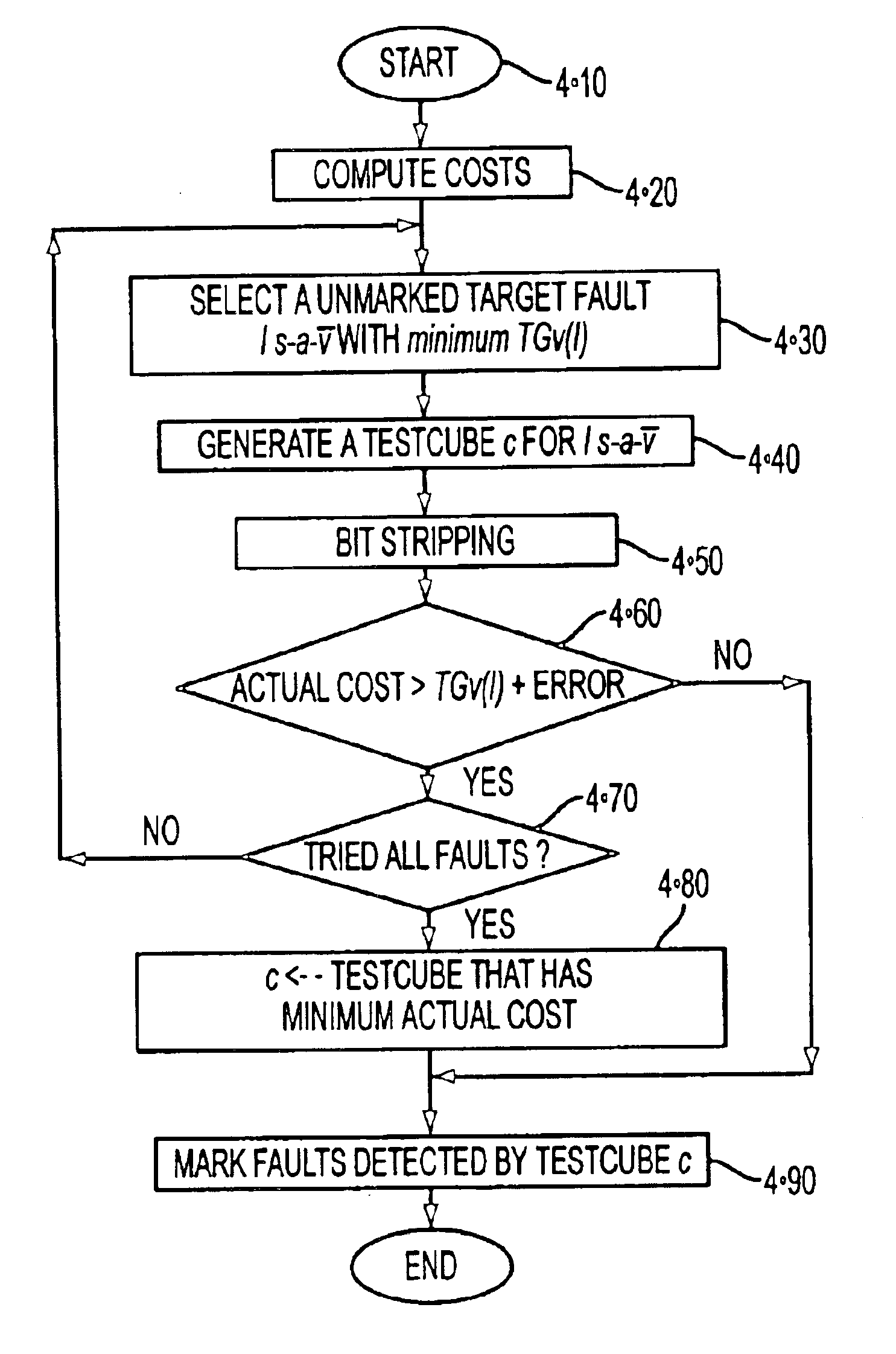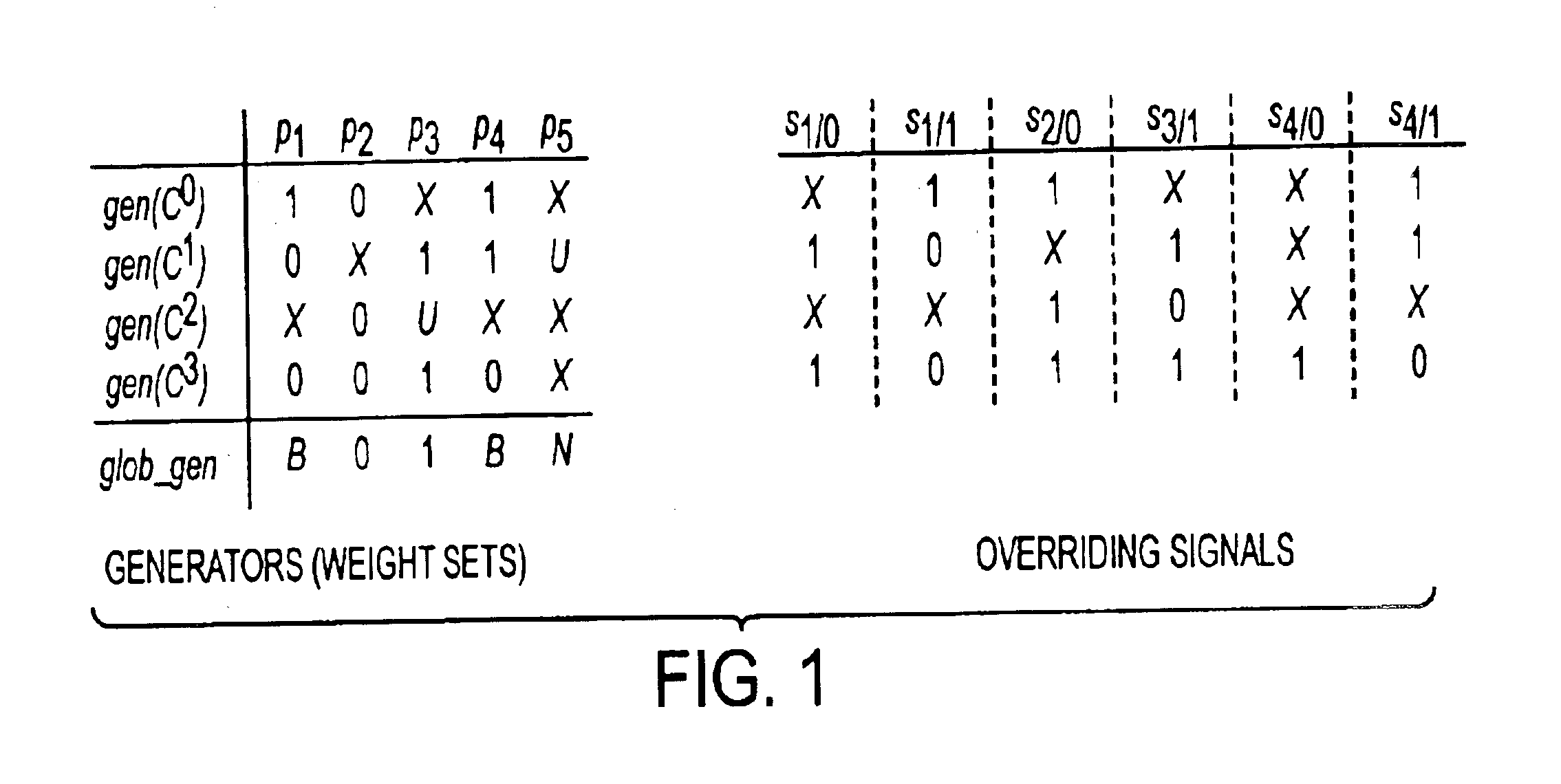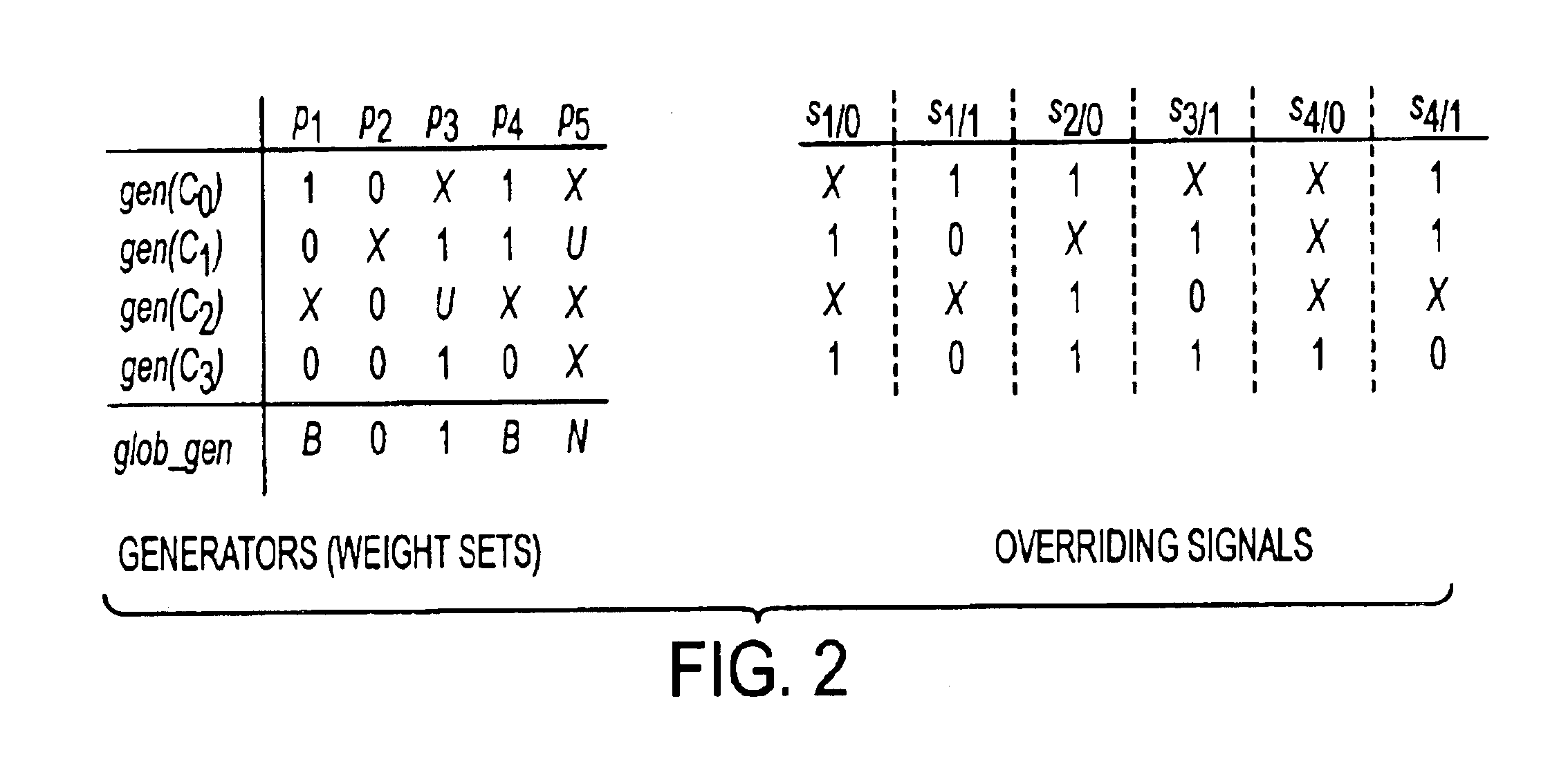Low hardware overhead scan based 3-weight weighted random BIST architectures
a random bist and hardware overhead technology, applied in the field of new automatic test pattern generators, can solve the problems of hardware overhead and achieve the effect of reducing the number of overriding signals
- Summary
- Abstract
- Description
- Claims
- Application Information
AI Technical Summary
Benefits of technology
Problems solved by technology
Method used
Image
Examples
Embodiment Construction
IV.A. Improved ATPG for 3-weight WRPT BIST
[0099]In the disclosed improved ATPG for 3-weight WRPT BIST, first, a sequence of pure pseudo-random patterns is applied to detect a large number of random pattern testable faults. It should be noted that random pattern testable faults refer to faults that are not random pattern resistant. The sequence of pure random patterns can be considered as a special generator all of whose elements are assigned U. In contrast to S. Pateras et al, I. Pomeranz et al, and M. F. AlShaibi et al, where all testcubes are generated in advance, the disclosed improved ATPG generates suitable testcubes for hard-to-detect faults one at a time. See S. Pateras and J. Rajski, Cube-Contained Random Patterns and Their Application to the Complete Testing of Synthesized Multi-level Circuits, In Proceedings IEEE International Test Conference, pages 473-482, 1991; I. Pomeranz and S. Reddy, 3-Weight Pseudo-Random Test Generation Based on a Deterministic Test Set for Combina...
PUM
 Login to View More
Login to View More Abstract
Description
Claims
Application Information
 Login to View More
Login to View More - R&D
- Intellectual Property
- Life Sciences
- Materials
- Tech Scout
- Unparalleled Data Quality
- Higher Quality Content
- 60% Fewer Hallucinations
Browse by: Latest US Patents, China's latest patents, Technical Efficacy Thesaurus, Application Domain, Technology Topic, Popular Technical Reports.
© 2025 PatSnap. All rights reserved.Legal|Privacy policy|Modern Slavery Act Transparency Statement|Sitemap|About US| Contact US: help@patsnap.com



